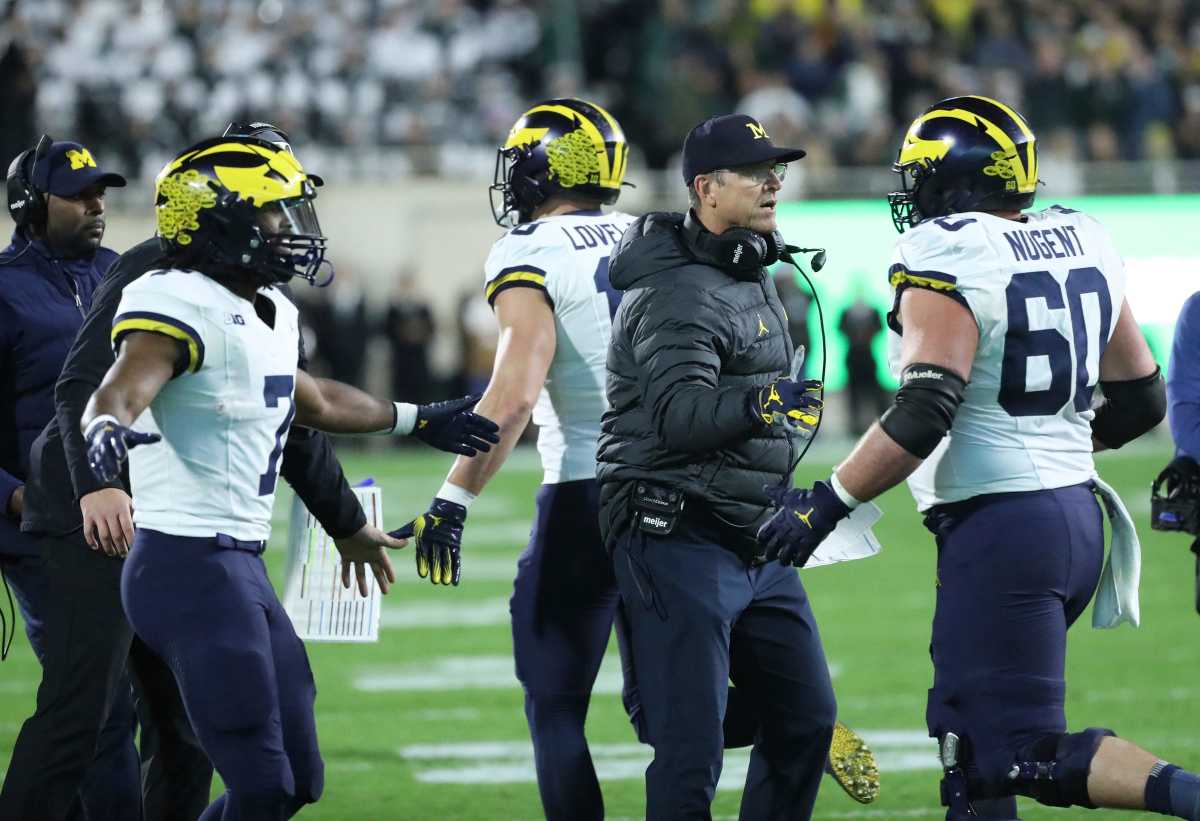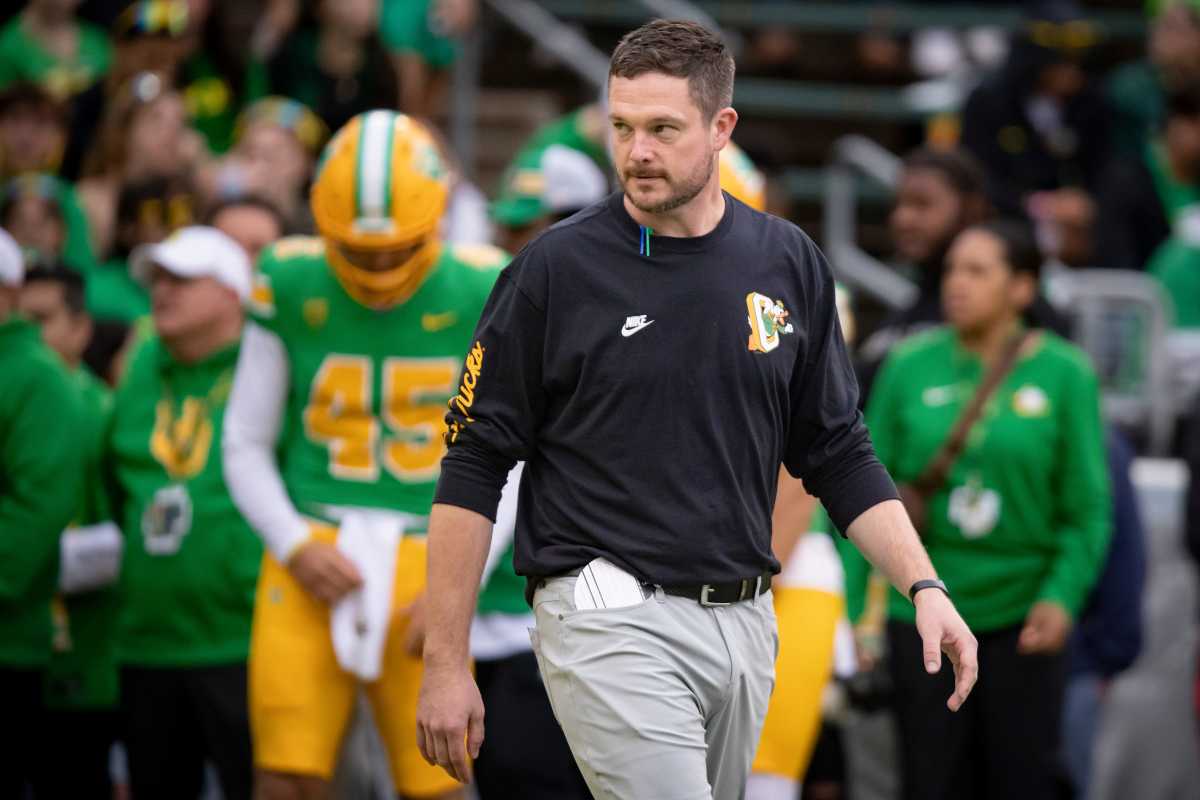The Top Six Coaches-Gone-Wild Moments of the 2023 College Football Season
Forty names, games, teams and minutiae making news in college football, where Iowa actually scored more offensive touchdowns than Washington on Saturday:
First Quarter: Coaches Gone Wild
On a weekly basis this season, coaches have said and done—or been accused of doing—some of the wildest things. It seems to have been a fall unlike any other in that regard. Your top six Coaches Gone Wild moments from the first eight weeks of the season:
Michigan Spygate (1). This is the newest entry, perhaps the most controversial and potentially the most impactful—at some point. It certainly does not fit the Garden-Variety Coach Controversy List.

Last week, word spilled out that the NCAA had informed the Big Ten that it was investigating claims of impermissible in-person scouting of Michigan opponents. While most details of the probe remain unknown, Michigan did suspend analyst Connor Stalions late last week. Sources told Sports Illustrated and other outlets that Stalions, reputed to excel at signal stealing, has become the focus of the investigation.
This still could go any number of directions, but it has cast a cloud of suspicion on a dominant Wolverines season—one that began with Jim Harbaugh suspended three games as part of another NCAA investigation. Michigan shrugged off the controversy Saturday night in pole-axing Michigan State in front of 74,206 fans and one incredibly inappropriate Adolf Hitler graphic on the video board. This investigation might not touch the program in a meaningful way until 2024, if at all. But everyone who has played Michigan or will play Michigan for the rest of the season has been given license to be suspicious about what’s in the Wolverines’ scouting reports.
Ryan Day and Marcus Freeman have a moment, on the same night, in different ways (2).
When Ohio State beat Notre Dame 17–14 at the last second, that was dramatic enough. Then came the postgame fallout, and man did that get weird.
Day’s interview on the field turned into a broadside aimed at 86-year-old Lou Holtz, who had questioned Ohio State’s toughness before the game. Then Day doubled down on it in the postgame press conference, getting into a beef with a retired coach and broadcaster who really hadn’t been heard from in years. It was an odd flex after a great win.
Then we learned about Notre Dame’s contribution to Ohio State’s victory: having only 10 defensive players on the field for two goal-to-go plays at the Fighting Irish’s 1-yard line, including the game-winning lunge by Chip Trayanum. He scored directly over the spot where Notre Dame was missing a lineman. It was a brutal gaffe, and it happened on consecutive plays.
Mario Cristobal gives a game away (3). Miami’s refusal to take a knee and run out the clock against Georgia Tech will go down as the single worst coaching call of the season, no matter what comes in the rest of the season. The Hurricanes should be 6–1, ranked in the top 25 and very much alive in the ACC championship game race. (They’re not out of that race as is, but with two league losses they likely need to win out and get some help in the weeks ahead.)
Mel Tucker’s $80 million phone call (4). One day, you’re the coach of the Michigan State football team with a set-for-life contract and a 2–0 start on the season. The next, the world is hearing about your allegedly inappropriate activity while on the phone with a woman hired by your program to educate players on how to treat women. And a few weeks after that, you’re fired. Life comes at you fast.
Dan Lanning leads the We Hate Field Goals brigade (5). When Oregon played Washington on Oct. 14, in a game with major playoff and Pac-12 implications, the coach of the Ducks treated fourth down as if he were playing the game on Xbox. He went for it three times, bypassing two chip-shot field goals and one strategic punt, and Oregon failed all three times on its way to a three-point loss. In their last three losses, the Ducks have missed nine straight fourth-down conversions: one on a game-losing decision against Washington last year, five against Oregon State last year, and the three against the Huskies this season.

This was all done in the name of aggressiveness, backed by analytics and part of the wave of modern football. But coaches increasingly are bypassing easy points in key situations, and it’s not working out well for some of them. Lanning provided the most obvious example in Seattle, but there were others this past Saturday as well.
The most glaring was when Arizona State’s massive upset bid of Washington vanished on a pick-six that should have been a field goal attempt. Leading the Huskies 7–6, the Sun Devils had the opportunity to go up four and make the Washington offense do what it hadn’t done all game: score a touchdown. Instead, Kenny Dillingham went for it—admittedly worried about an offensive line that gave up a blocked field goal earlier in the game—and his quarterback served up an 89-yard interception-turned-touchdown that changed the game. Dillingham coached his tail off in the game and has done good work in a thankless job this season, but he turned down a 29-yard kick. (The common thread between these decisions by Lanning and Dillingham, beyond the fact that Dillingham worked for Lanning last year at Oregon? The opponent was Washington, and the Huskies are making opposing coaches crazy. They’re so scared of the Washington offense that they’re only thinking about touchdowns when field goals can be helpful as well.)
In Power 5 conference games Saturday, teams went for it on fourth down 99 times. They converted 36 times (36.4%). It’s hard to say what a good success rate would be in a vacuum without knowing distance and time and score in each circumstance. But 36% doesn’t seem great. The breakdown by league: ACC teams were 7 of 19; Big 12 were 13 of 27; Big Ten and Pac-12 both were 5 of 18; and the SEC was 6 of 17.
Opposing coaches flip out over Deion Sanders (6). The arrival of Coach Prime in Boulder led to a volcano of publicity for Colorado, and some of his peers in the profession got a little wound up about it. Colorado State coach Jay Norvell took a shot at Sanders’s habit of wearing his hat and sunglasses at almost all times, which prompted an it’s personal response from Prime. And then there was Lanning’s pregame speech to his Oregon team playing the Buffaloes, in which he declared that Colorado is “fighting for clicks” while his team is “fighting for wins.” The Ducks got an easy win that day, 42–6, but that put the lie to the old coaches’ bromides about only worrying about their own teams and ignoring outside noise. For a month at least, the Sanders noise was too loud to ignore.
Four for the Playoff
Each week, The Dash brackets the College Football Playoff as if today is Selection Sunday. With the first CFP selection committee rankings due out next week, here’s where we stand:
Sugar Bowl: top seed Florida State (7) vs. fourth seed Michigan (8).
The Seminoles (7–0) racked up their fifth victory of more than 17 points Saturday, dominating a tenacious Duke team in the final quarter to pull away. The ’Noles are finishers, outscoring opponents 159–50 after halftime and 80–23 in the fourth quarter. With Michael Penix Jr. and Caleb Williams wobbling, make room for FSU quarterback Jordan Travis in the Heisman Trophy discussion. Next up for Florida State: at Wake Forest.
The Wolverines (8–0) have been the most dominant team in the country. Their average margin of victory (34.7 points) leads the nation, as does their points allowed per game (5.9). But the quality of competition remains low, with a Sagarin rating Michigan’s schedule strength 73rd nationally to date—the lowest of any team in his top 30. Next up for Michigan: an open date that presumably will include a few discussions with the NCAA.
Rose Bowl: second seed Ohio State (9) vs. third seed Washington (10).
The Buckeyes (7–0) added a methodical win over Penn State to their dramatic win over Notre Dame. What they lack in offensive firepower they make up for in defensive stoutness, which is a detour from what had been the program’s identity under Ryan Day. Good coaches find different ways to win depending on personnel, and Day is doing that with this team. Next up for Ohio State: at Wisconsin in a trap-ish road game.
The Huskies (7–0) got a massive scare from one-win Arizona State, with their offense mystifyingly bogging down all night. Penix’s pass efficiency rating of 109.77 was his lowest of the season by more than 40 points, in what was also his first two-interception game in nearly 13 months. Washington ran for a season-low 13 yards on a season-low 13 attempts. Good teams almost always have to endure at least one very bad performance, and that certainly qualified.
Next up for Washington: at Stanford.
Also considered: Georgia, Oklahoma, Oregon, Texas, Alabama.
